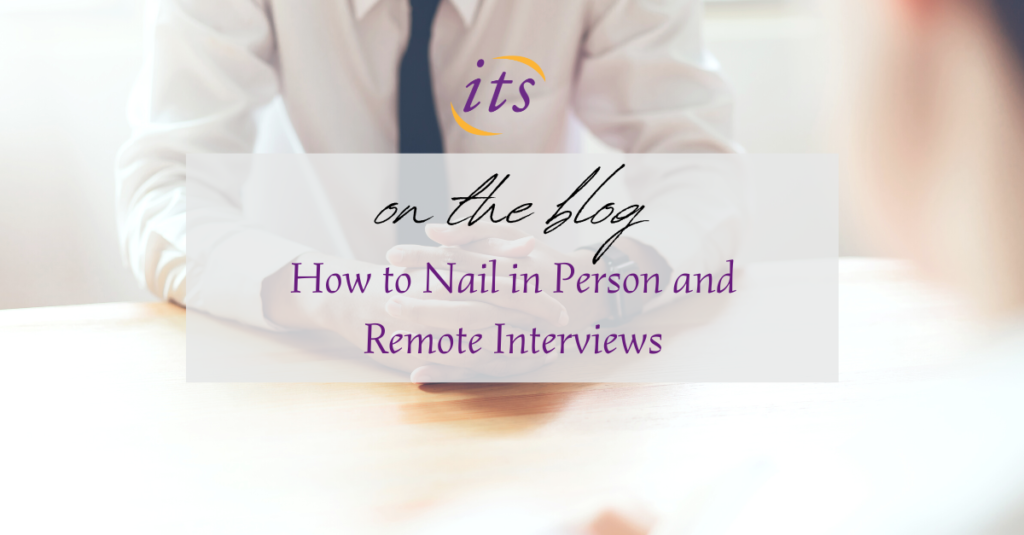How to Nail In Person and Remote Interviews

For two long years we’ve had to conduct all interviews online. Now, in person interviews are certainly coming back, but it doesn’t look like remote interviews are going away any time soon. You may even have to participate in a remote interview and an in person interview in the same hiring process! Understanding how to nail both of them is a skill any interviewee must have in today’s world. In this article, I’ll highlight some of the differences between in person and remote interviews, and discuss how to nail both every time.
How They’re Different:
Both remote and in person interviews have their pros and cons. A remote interview allows you to be in a more relaxed environment, which can help ease the tension that naturally comes with something as stressful as a job interview. However, a lot of the subtleties of human interaction are lost in video chat. Body language becomes less of a factor and you cannot make direct eye contact with the person you’re speaking to. This can make it harder for the interviewer to gain an understanding of who you are as a person, which can ultimately be the deciding factor in who they choose among a pool of equally qualified candidates. You can still show confidence, personability, and expressiveness in a remote interview — you may just have to work harder at it!
How to Nail Them Both
Regardless of where or how the interview is conducted, the fundamental rules on how to conduct yourself stay the same. They may just need some tweaking for a remote setting. Here are some tips on how to make an impact in any interview:
- Greeting – First impressions never go away. A warm, enthusiastic greeting is a foolproof way to make sure your interview starts off on the right foot. For an in person interview, you should firmly shake their hand, make eye contact, and smile. In a remote setting, your facial expressions are significantly more important. Look into the camera lens (not their eyes on the screen), and greet them with a genuine smile and a wave.
- Presenting Yourself – Confidence when speaking during an interview shows you have confidence in your abilities and qualifications. It’s natural to be nervous during an interview, but you can be nervous and confident at the same time! For any interview, in person or remote, make sure to sit with good posture and speak clearly and articulately. Make sure not to say “um” or “like” too often. If you lose your train of thought, simply pausing suggests you are carefully searching for the right words, while filler words make you look unsure and unfocused. In a remote interview, your camera and microphone also play a factor in how you’re presented to your interviewer. Make sure you are in a well lit room, your background is clear of clutter (or just blur it out), and that your microphone produces clear audio. Using a headset or headphones with a microphone built in is generally better than relying on your computer’s microphone, which will likely be several feet away from you.
- Following up – While not strictly part of the interview, a proper follow up after the interview gives you a chance to reiterate why you are the best candidate for the job and shows you’re eager to get started. ITS will guide you through this process after the interview to make sure you present yourself in the best way possible.
The differences between remote and in person interviews are subtle, but understanding these differences can drastically improve your interviewing skills in both settings, which brings you that much closer to landing the job!
